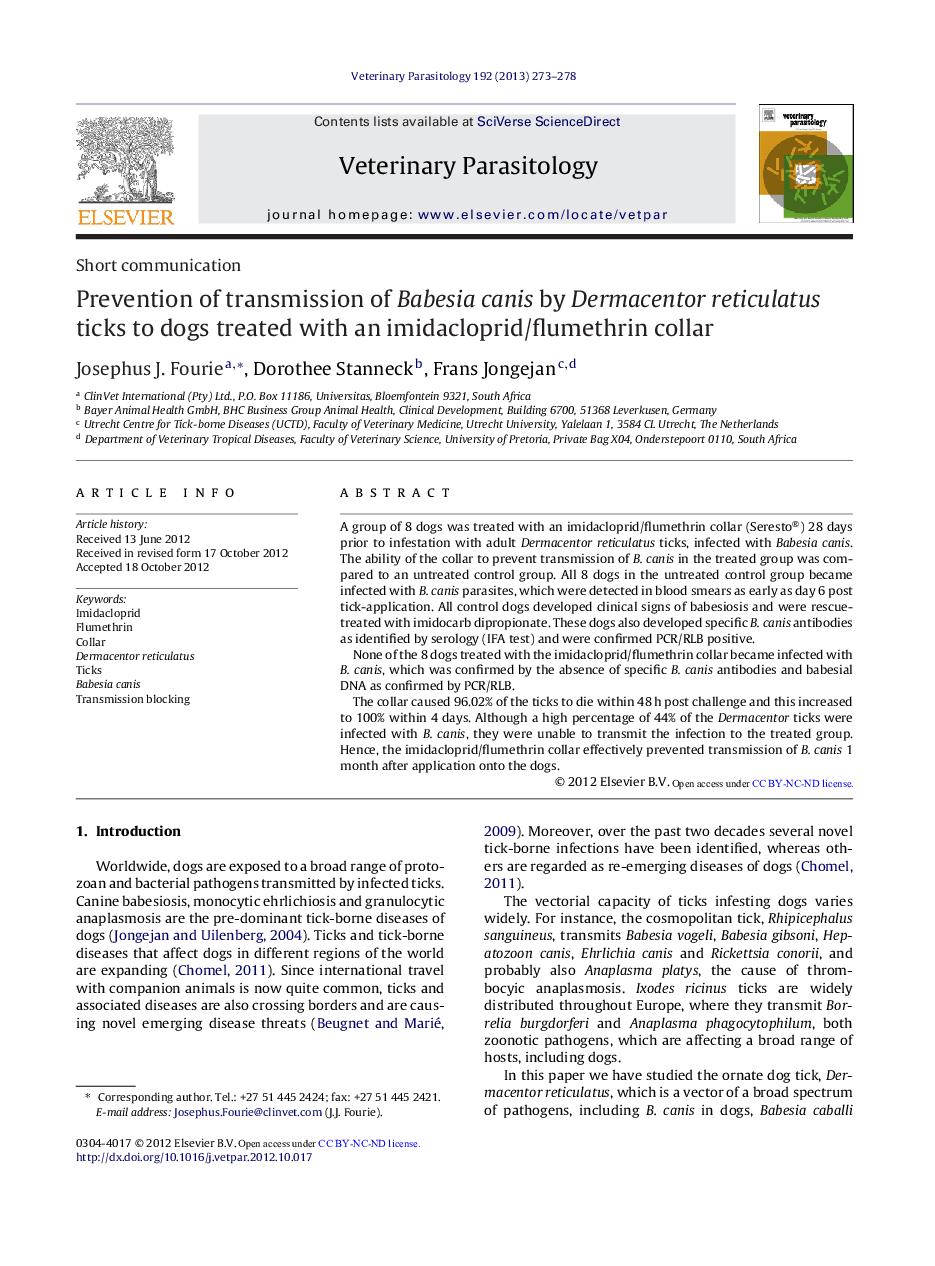| کد مقاله | کد نشریه | سال انتشار | مقاله انگلیسی | نسخه تمام متن |
|---|---|---|---|---|
| 5804494 | 1555704 | 2013 | 6 صفحه PDF | دانلود رایگان |

A group of 8 dogs was treated with an imidacloprid/flumethrin collar (Seresto®) 28 days prior to infestation with adult Dermacentor reticulatus ticks, infected with Babesia canis. The ability of the collar to prevent transmission of B. canis in the treated group was compared to an untreated control group. All 8 dogs in the untreated control group became infected with B. canis parasites, which were detected in blood smears as early as day 6 post tick-application. All control dogs developed clinical signs of babesiosis and were rescue-treated with imidocarb dipropionate. These dogs also developed specific B. canis antibodies as identified by serology (IFA test) and were confirmed PCR/RLB positive.None of the 8 dogs treated with the imidacloprid/flumethrin collar became infected with B. canis, which was confirmed by the absence of specific B. canis antibodies and babesial DNA as confirmed by PCR/RLB.The collar caused 96.02% of the ticks to die within 48Â h post challenge and this increased to 100% within 4 days. Although a high percentage of 44% of the Dermacentor ticks were infected with B. canis, they were unable to transmit the infection to the treated group. Hence, the imidacloprid/flumethrin collar effectively prevented transmission of B. canis 1 month after application onto the dogs.
Journal: Veterinary Parasitology - Volume 192, Issues 1â3, 18 February 2013, Pages 273-278